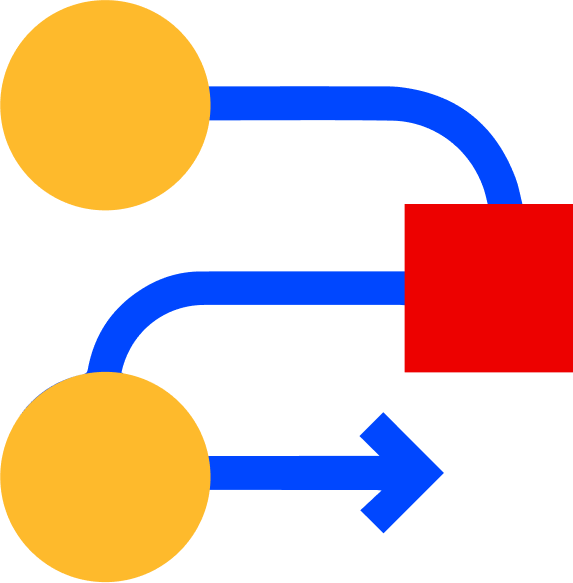Information Governance in the Cloud Era: Protecting Legal Data While Enabling Accessibility


What happens when your legal team needs data now, but that data is buried across Slack, email threads, and cloud storage apps you didn't even know existed?
Legal departments are under pressure to respond fast, whether it's for record requests, litigation, or internal audits. The problem? Most organizations don't have a handle on their data.
That's where modern information governance comes in. It's not about locking data down. It's about making it secure, organized, and instantly accessible to those who need it, without compromising compliance.
If you're ready to stop chasing data and start managing it, this article will show you how.
Why Traditional Governance Fails in the Cloud
Legal teams used to manage information with on-prem systems and email chains. That worked, more or less, when everything lived in one place.
These systems, though, were never built to handle what cloud platforms now produce daily: constant, decentralized collaboration across dozens of tools.
Today, legal data doesn't sit in one folder. It's scattered across Slack, Google Workspace, Microsoft Teams, and other apps. This fragmentation tends to create gaps in visibility, especially during audits, internal investigations, and legal review.
Without a central view, you often miss context that matters, like message reactions, edited comments, or shared files.
Manual workflows, too, aren't keeping up. Legal teams need speed and accuracy. You might receive record requests that have to be fulfilled within days, or even hours.
Sorting through every possible data source by hand is slow, expensive, and sometimes incomplete.
The Core Principles of Modern Information Governance
Modern information governance starts with the right foundation. If your data is all over the place, you can't secure it or respond to legal events effectively. Centralization, automation, auditability, and real-time access help legal teams work faster and with fewer risks.
Centralization
Centralizing data helps legal and compliance teams search and manage everything from one location. You reduce time spent toggling between tools and, in a way, start seeing patterns you may have missed when systems were siloed.
It's especially helpful for legal document management, where finding one contract or email chain can unlock a full case timeline.
Automation
Policies shouldn't be applied manually. You need automation to consistently apply retention rules, legal redactions, and classification tags across your entire environment. This kind of setup helps prevent human error and saves your team from repetitive work.
Some examples of what automation can cover include:
- Auto-tagging sensitive content like PII or payment data
- Setting default retention periods based on content type
- Redacting known identifiers before data leaves the system
- Routing documents to the correct reviewers based on rules
Auditability
Legal defensibility depends on clear records. That means full metadata, edit history, and audit logs should be available for every file and message. You should know when data was collected, who accessed it, and whether any changes were made.
Real-Time Access
Data changes fast. Someone might edit or delete a message hours after it's created. Your governance tools need to keep up.
Continuous sync allows you to access the latest version of your data and respond more confidently during reviews or record requests handling.
Balancing Security With Accessibility
Legal teams have to keep data secure. That said, they also need to get to that data quickly, share it with others, and use it to make informed decisions.
The balance between protection and usability tends to be hard to strike, especially if you're working across many cloud tools.
Secure access controls are part of the solution. You can give different teams different levels of visibility using role-based permissions. That way, sensitive information stays protected while reviewers, outside counsel, or compliance staff can still do their jobs.
Legal teams often rely on tools that allow them to:
- Filter large data sets down to what's actually relevant
- Tag specific portions of documents for quick reference
- Apply redactions directly within the review platform
- Preserve content without moving it from its original source
These features help you avoid exporting everything just to search for a single file. Platforms like Onna offer this type of functionality, giving legal teams fast access to their cloud data, without needing IT to get involved.
In some respects, that ability to move quickly while staying compliant is what really separates helpful tools from frustrating ones. You want to search across everything at once, view data in context, and decide what to export, all without needing multiple systems stitched together.
Key Capabilities to Look for in Cloud-Era Governance Tools
You've got options when it comes to eDiscovery software, but not all platforms are built with today's collaboration tools in mind. Some work well for email and file shares, but fail when handling Slack, Teams, or other chat-based systems.
When comparing options, look for tools that can handle both modern formats and the volume of unstructured data being generated every day. Some features are especially helpful for teams focused on data privacy compliance and PII protection methods.
These capabilities often make a difference:
- Pre-built connectors
- NLP and ML features that spot sensitive data like PII, contracts, and financials
- Continuous sync for updated content and legal holds
- Open APIs for adding internal tools or building custom workflows
If you're running an eDiscovery tools comparison, it helps to ask how each product handles different data types and sources. Some platforms only preserve what's live at the moment of collection. Others, like Onna, can capture edits, deletions, and metadata, which gives you more context and control.
You might also want to consider:
- How well the tool supports record requests workflows
- Whether redactions are built-in or require separate tools
- How flexible the export formats are for downstream legal review
Unlock a Better Way to Govern Legal Data
Legal teams need information governance that's built for cloud-scale challenges and compliance demands. From securing PII to managing legal redactions and automating record requests handling, this article outlined the core strategies and tools that make data both protected and accessible.
Onna makes this possible with a platform designed for cloud-based legal document management. We offer pre-built connectors for Slack, Google, and Microsoft, rapid search across all sources, advanced PII detection, and customizable exports for fast, reliable eDiscovery. What sets Onna apart is our ability to centralize unstructured data and make it usable, without heavy IT lift.
Contact Onna today to take control of your legal data.
 eDiscovery
eDiscovery Collections
Collections Processing
Processing Early Case Assessment
Early Case Assessment Information Governance
Information Governance Data Migration
Data Migration Data Archiving
Data Archiving Platform Services
Platform Services Connectors
Connectors Platform API
Platform API Pricing Plans
Pricing Plans Professional Services
Professional Services Technical Support
Technical Support Partnerships
Partnerships About us
About us Careers
Careers Newsroom
Newsroom Reveal
Reveal Logikcull by Reveal
Logikcull by Reveal Events
Events Webinars
Webinars OnnAcademy
OnnAcademy Blog
Blog Content Library
Content Library Trust Center
Trust Center Developer Hub
Developer Hub